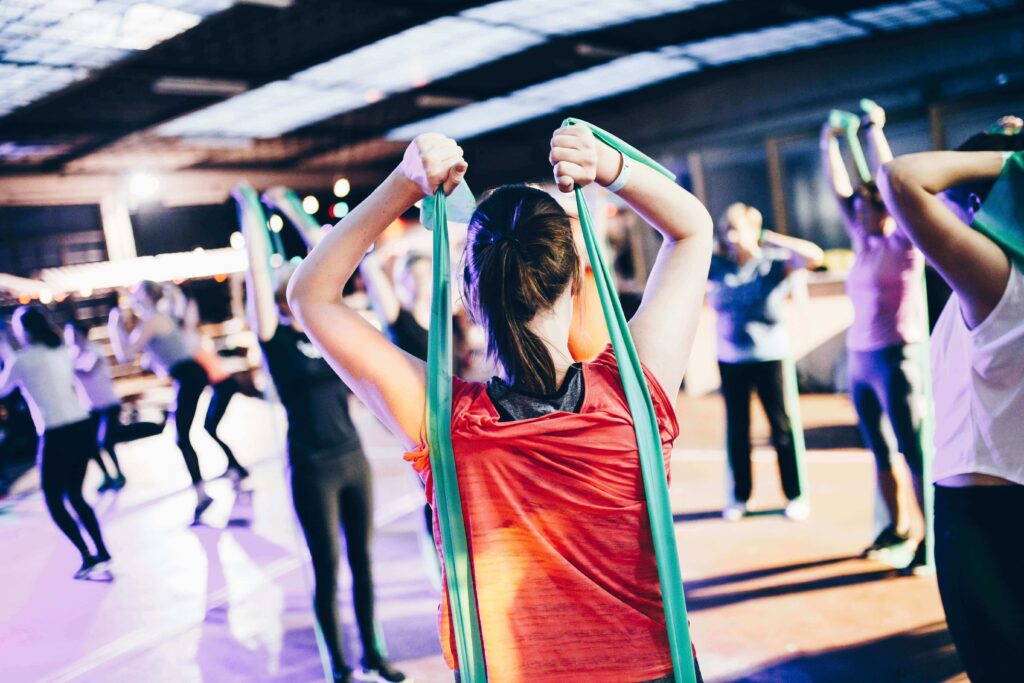Connecting fitness to the rest of your life should be seen as something you partake in every day, just like brushing and flossing. This is about developing physical toughness. Fitness is ever more empowering for women, giving them control over their health and wellness. This complete guide to women’s fitness is dedicated to offering advice and tactics that were particularly designed with the goals of females. We know a lot of you have already started your own paths, or are trying to re-center yourself so this new guide will provide some insights and motivation for how to either begin!
Understanding Women’s Fitness
WEIGHT-LOSS & DIET MYTHS; Women’s fitness is also one of the most misconstrued subjects as well. The biggest lie is that heavy weight lifting will make girls fat. In reality, women typically don’t produce enough testosterone to gain large amounts of muscle mass naturally. Strength training however can lead to a toned and defined physique while also boosting metabolism improving bone density and enhancing overall strength.

Setting Realistic Objectives
Before entering into any fitness routine, it is very important to establish unique and feasible desired goals. These goals need to be SMART specific measurable attainable relevant and time-bound. Eg Rather than saying I want to get fit a SMART goal could be I want to run a 5K in under 30 minutes within the next three months.
Creating a Balanced Routine
Be sure that your exercise routine includes some cardio work aerobic strength building anaerobic and something to increase flexibility balance exercises. This type of workout ensures to touch upon all important areas thus establishing holistic health and fitness.
1. Cardiovascular Exercise: Cardio workouts are essential for heart health and calorie burning. Doing things like running, cycling and swimming can help burn collagen-pinching fat as well – the kind of good old-fashioned cardiovascular activity that gets your heart pumping. You should have 150 minutes of moderate-intensity or at least 75/week high-intensity workouts.
2. You should consider strength training in your daily workout because it helps to build and maintain muscle mass, not only this but also focus on the Major Muscle Group with exercises like Squats Deadlifts Bench Presses, and Rows. Try to get in 2 strength training sessions weekly.
3. Flexibility & Balance: Ideal for increasing flexibility and improving balance – consider Yoga or Pilates. Doing these also aids in stress management & mental clarity. Try to work in flexibility exercises for at least two days a week So that your joints can keep all of their range.
That Nutritional:
Your Diet Is To One Own Personal Training Nutritious food is necessary for any fitness system. The right foods you eat from real whole food sources will help to provide the essential energy and nutrients needed for performance, and recovery – including muscle repair and growth. Macronutrients: Eat carbs proteins and fats -carbs for energy, protein to recover repair & build muscles; healthy fats help produce hormones and keep you in good health.
2. Hydration – Hydrating properly is fundamental to performing at your best. Try to drink a minimum of 8 glasses/day (2 liters) and increase that amount with exercise or hot climates.
3. Time is everything: Eating the perfect food before and after a Workout can actually make or break your day in the gym. Eat a modest meal/snack containing whatever carbohydrates and protein 1-2 hours before practicing. If you are working out, then replace a meal with some protein requirement for muscle recovery. The Significance of Rest and Recovery All too frequently rest and recovery are neglected next to the workouts. This can result in burnout injury and decreased performance due to overtraining. Rest days are also important to allow your body time to recover and adapt to the stimuli induced through exercise.
1. Sleep: 7-9 hours of quality sleep per night Sleep is key in muscle recovery, building lean muscles, and overall wellness. 2. Active recovery: low-impact activities like walking, restorative yoga or just some stretching. – Days off work Active Recovery is filmed for a short low-impact exercise that will get the body moving, increase blood flow and muscle soreness, etc.
3. Listening to your body – Really tired, irritable, and ongoing decline in performance. If things get tough, then work towards changing your routine so that you can avoid burnout.
Overcoming Common Challenges
It’s one thing to work out and burn calories. Let us examine some common challenges women face and the ways to overcome them.
1. Lack of Time: Balancing work family and fitness can be challenging. Schedule your workouts like any other important appointment. Even short high-intensity workouts can be effective.
2. Motivation: staying motivated can be very hard, particularly when the progress is so small Pick Some Smaller Goals, and Give Yourself a Win Encircle yourself with a support group, be it a gym buddy or an internet community.
3. How to beat self-doubt: We are all a bit sheepish at first. Everyone was once a beginner. Concentrate on the progress you are making and do not measure yourself against someone else. Body ConnectionFitness is not just physical fitness; it is a large part of that, but mental health! Working out really changes the way you feel!
1. Helps In Reducing: Endorphins: These are produced to help in relieving stress and feeling better. Choose the activities of exercise you enjoy to turn them into a stress-relieving experience.
2. Self Esteem-Often times working out and sticking to your fitness goals helps with confidence. Take the time to celebrate your milestones both big and small; acknowledge where you are in this very moment
3. Mindfulness – Yoga and meditation improve mind-body connection. These practices keep the mind on track allowing you to remain focused so that, not only in workouts but through everyday life as well Boy! Creating an Individualized Fitness Journey No two women’s fitness journeys are the same Customize your ritual to play into what suits you and help keep true to lazy habits of life.
1. Personal Preferences: Choose activities you enjoy to stay motivated. Whether it’s dancing hiking or playing a sport the key is to find what you love.
2. Life Stages: Fitness needs can change at different life stages. Pregnancy postpartum menopause and aging each come with their own considerations. Consult with a fitness professional to tailor your routine to these specific stages. 3. Professional Guidance: If you’re unsure where to start or how to progress consider seeking help from a certified personal trainer. They can provide personalized guidance and ensure you’re performing exercises correctly and safely.
Celebrating Progress
Remember to celebrate your progress along the way. Fitness is a lifestyle change, and every step you take towards being healthy counts.
1. Keep a journal You can use this to track your workouts, fitness, and if there is any elimination recall with the food that you were eating This can help you see your progress over time and identify areas for improvement.
2. Reward Yourself: Set non-food-related rewards for achieving your goals. Treat yourself to a new workout outfit a massage or a fun outing.
3. Reflect – Spend some time reflecting on your journey. Celebrate that progress and create new goals to continue the momentum. Conclusion It is a journey on multiple levels when it comes to women’s fitness – physical mental and emotional. Balanced nutrition, ample rest, and recovery – when you set realistic goals around what is too much of one thing (consistent fitness) to the detriment of another then all your fitness dreams can come true. Challenges can be simultaneously overcome with a mind-body approach when you craft your path to health and fitness for YOU. The important thing to remember in any fitness journey is joy and the celebration of achieving every small milestone.

